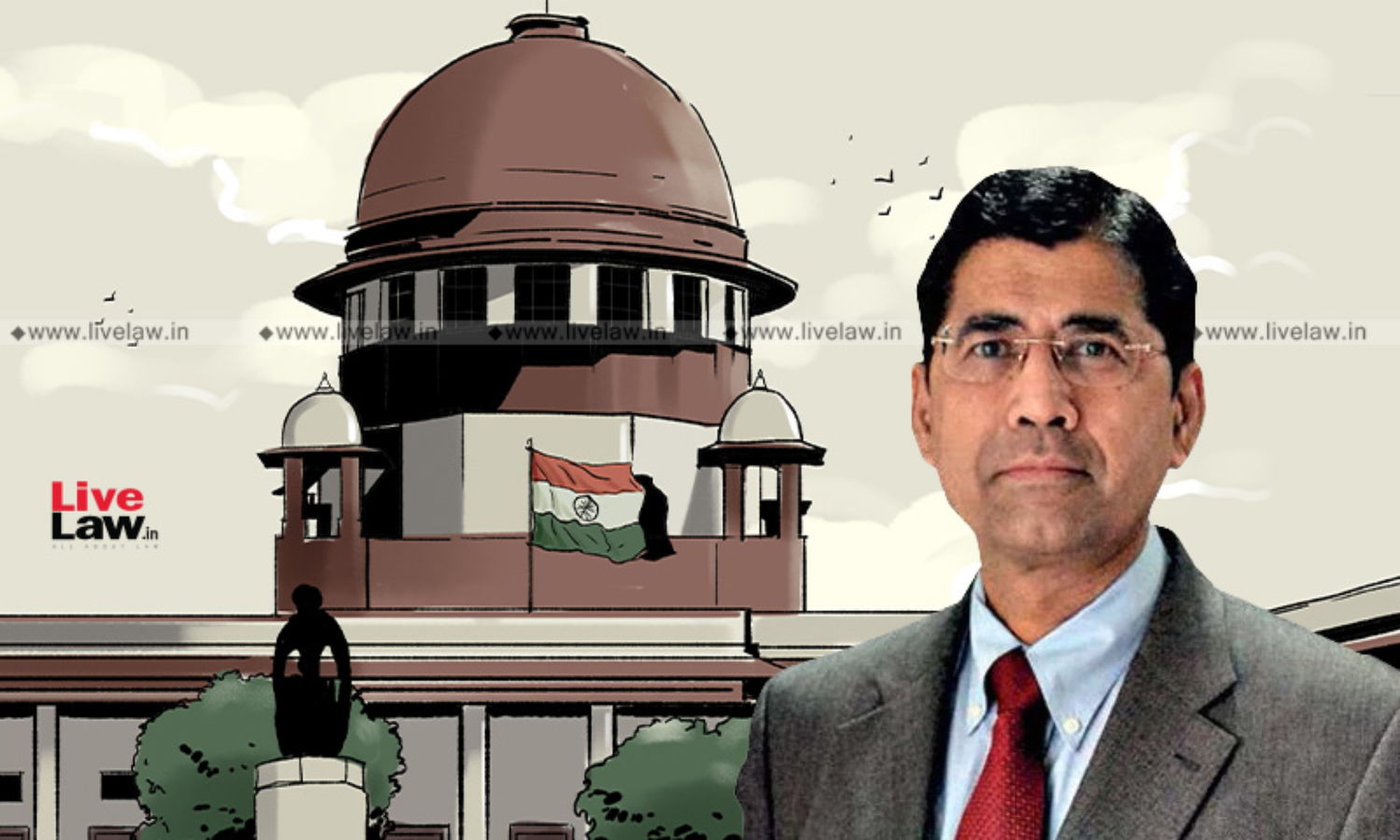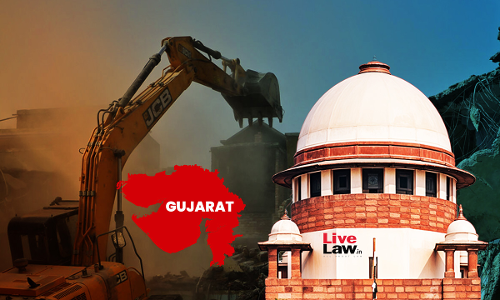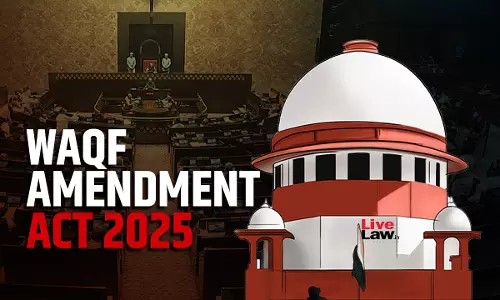"A. K. Gopalan case was one of the first judgments in the Supreme Court- If you take up the A. K. Gopalan case, you will find it was writ petition no. 13 of 1950. What is puzzling is what was writ petition 1? What were 1 to 12? I am trying to find out and when I do, I will write a small piece in one of the journals...there were initially six Supreme Court judges and the A. K. Gopalan case had a bench of six judges. The 7th judge came only in September, 1950 onwards- Justice N. Chandrashekar Iyer. Mercifully, no judgment is a tie in that period. Even A. K. Gopalan was approximately 4:2. I would recommend all youngsters to read Justice Fazal Ali's dissent. There was a Preventive Detention Act of 1950 under which A. K. Gopalan and many members of the Communist party were detained. The question was that I have rights under Articles 19(1)(d), 21, 22, so when you detain me, are you restricting my right to movement and is it violating 21? Does it amount to reasonable restriction under 19(4)? That was a time when after Independence, there was a Communist movement, strikes were there, general public sentiment was that there should be a preventive detention law and some people should be detained without trial for a certain period. The majority upheld the entire Act, except section 14- section 14 was that the Executive may not disclose reasons to the court for detention. Then comes the first masterly dissent of Justice Fazal Ali. He was a judge of the Supreme Court for just 2.5 years. The way he had written his judgment is absolutely mesmerising. He starts off by saying what is the scope of 19, 21, 22. And for the first time he says that do not consider these articles in isolation, you must consider them as an interplay between each other. There is no point saying that my fundamental right under 19 can be taken away by a law under 21. The way he discusses the Canadian, Japanese, US Constitutions, what is the due process, what is the procedure established by law- it took a great amount of courage for him to say that the entire Act can be struck down, that you cannot detain a person without giving reasons, you cannot restrict his movement beyond a certain amount of time", explained Mr. Datar
"I am coming to the most beautifully written judgment, not only in India but all over the world- the most beautiful piece of English literature, the law and the passion of the man comes out in that judgment. I am talking about the dissent of Justice Vivian Bose in Anwar Ali's case. Anwar Ali Sarkar was a case which came from West Bengal. It was first heard by a bench of five judges in Calcutta. Chief Justice of the Calcutta High Court struck down this law. There was a West Bengal Special Ordinance which had a Fast Track trial procedure where the accused did not get enough safeguards which were otherwise available to him under the code of criminal procedure. Look at the offence- 50 armed dacoits raided a factory in Calcutta, they were tried and convicted under the special law. The West Bengal special ordinance of 1950 was challenged on the ground that how do you pick and choose, why should one person go for the fast-track procedure and another similar dacoit person be called for a non-special procedure? This judgment was delivered on January 11, 1952. By that time, we had seven judges in the Supreme Court. Six unanimously overruled the judgment. They said such an ordinance is needed, 50 people have raided the factory, these are difficult times, they went with the facts of the case and upheld the law and said that such a law is needed in these times. Now comes the dissent of Vivian Bose which should be read every year, like we take the Law Day pledge, this judgment is worth reading once a year. This is a judgment where Justice Vivian Bose analyses what the scope of article 14 is- when you say equal protection of the law, equality before the law, what it is. He goes step-by-step and says we are dealing with the Constitution and uses a wonderful expression, he says our Constitution is not a mummified manuscript, it is not a fossilised document, it is a living document, that we should ask ourselves the question that can this kind of law where, without any logic or reason a group of people are put under the special act without any distinguishing feature, can be supported? Does the social conscience of a sovereign democratic republic support such a law or not? And then he says on what basis does Mr John go under the special act when Mr Rahim doesn't go under it. He said don't let facts colour your mind, think of the longer vision. In one of the most beautiful passages, he says 'when the froth and foam of discussion is cleared away, the learned dialects are put on one side, at last comes the human element which to my mind is the most important of all'. And then he goes and says that I will strike down the whole law, that the Constitution is about the human element. For the first time, he expanded the scope of article 14, he says equality is not a mere classification and not what Aristotle thought it to be, that all the time you keep the human element, what is the role of the citizen, what is the impact on the citizen, all the time you keep this in mind", elaborated Mr. Datar.
Justice Subbarao and Lt. Col. Khajoor Singh's case
"The third interesting dissent is in 1960 in Lt. Colonel Khajoor Singh where Justice Subbarao dissented. He said that why should article 226 petitions not be filed in independent states. What fascinates me is the analysis done by the judges in arriving at the conclusion. In C. P. C. we say the suit is to be filed where the defendant resides. But Subbarao says that the central government is everywhere. He says that please see order 27 rule 3 of the C. P. C. and section 79. When you file a suit against the central government, there is no need to mention the address because the central government has no address, it is all over India. He says that when you deal with the writ petition, you are not concerned with where the government officer is sitting, you are concerned with in which state was the action which has affected a citizen. So if an action has taken place in Delhi and impacts a citizen in Kerala or Tamil Nadu, then that High Court has the jurisdiction. It was this judgement which ultimately led to the 15th amendment- Wherever the cause of action arises, writ petition can be filed", discussed Mr. Datar
Justice Subbarao and Kharak Singh's case
"Another masterpiece of Subbarao. It was again a judgment of six judges.These are the great judges who did not let the facts glow over the larger Constitutional vision. Kharak Singh was a history-sheeter, he had a track record. In the UP state surveillance rules, whenever he had to go out of his village, he had to report to the police station. When he came back, he had to tell them that I have come back. Because he was a history sheeter, that rule enabled the police to knock at his door at any time of the day or night and in the affidavit he says that repeatedly they have come at 1 o'clock in the morning, 2 o'clock in the morning, woken me up, taken me to the police station, asked me some questions. If you look at the dissenting judgment of Subbarao, he says that this man has a bad record but I will not decide this constitution on the basis of one man's bad record, I am thinking about the citizens of India. Then he goes into what is the meaning of liberty, personal liberty, discusses the Canadian constitution, the US constitution and then he says that if this is the surveillance, if I am not safe in my home, if anybody can walk in at any point of time, then the whole country is a jail. It is a masterpiece of visualisation. Nobody is safe in this country if the surveillance rules are there, he said, and then he struck it down in 1962. Almost after 50-60 years, his minority view then became the majority view in Puttaswamy. The importance of Kharak Singh is twofold- seeing personal liberty not through the lens of individual cases but what will be the impact of this view on a larger number of people. Kharak Singh may be a bad man but look at the potential of misuse. What is the safety of a citizen if anybody can come to your house at any point of time and ask you to report?", canvassed Mr. Datar.
Sajjan Singh's case
"Immediately after the Constitution came into force, zamindari laws were struck down by Patna High Court, Madras High Court etc. Immediately the first amendment was passed. Please note the first amendment was passed by the same assembly which continued, we did not have a new parliament till then. It was a unicameral legislature, we had no lower house or upper house. One question raised is if the first amendment is valid because where is the approval of the Rajya Sabha? But that amendment was upheld and Shankari Prasad case says that the land reform laws are correct and we have a unique situation where we have a ninth schedule in the Constitution which said that once you put a law in the night schedule, you cannot challenge it on the ground that it violates some of the rights. Shankari Prasad upheld the ninth schedule. Shankari Prasad came in 1951. There were several amendments after that. In 1965, we had the 17th amendment to the Constitution. In every major amendment, a law was put in the ninth schedule so you cannot challenge it. This was the case of Sajjan Singh v. State of Rajasthan. This is a case where a large number of coal mines and sugar mills were also affected because their properties were taken away and payment of compensation was very, very minimal. Mr Palkhivala was to appear in that case and they told him that please come today because the matter may get over at lunchtime, he said I will come tonight and argue tomorrow. As bad luck would have it, Justice Gajendragadkar refuse to adjourn the case, arguments were closed and judgment reserved, Mr. Palkhivala was never to argue the case. Mr D. M. Popat, who was a partner of Mulla and Mulla, had had a long conference with Mr Palkhivala in the Sajjan Singh case, while preparing. They asked the question if you amend the Constitution, till where can you go. Can you take away all the fundamental rights, where do you draw the line. So Mr. Palkhivala had asked at the conference with Mr. Popat- in the course of amendment, can you abrogate the Constitution. That was in the discussion but it was never put forth to the court. Look at what happened actually, five judges heard Sajjan Singh's case, two judges whose judgment I would request you to read are Justices Hidayatullah and Mudholkar. Actually, they are not dissenting, both Hidayatullah and Mudholkar say that we agree with the chief justice that the 17th amendment is valid. Then the beautiful passages start. First, Justice Hidayatullah says that now 17 amendments have taken place, right after right is gone, everything is put in the night schedule; that if you go to article 368, if you want to amend the fundamental rights, it is a simple procedure, no ratification of the states, no 2/3 majority etc; but if you want to amend subsequent procedures, then you have so many safeguards. I find it difficult to believe that I can take away a man's freedom of speech but for something relating to state election I have to take ratification by states etc. Look at the paradox. He says to amend 226, there is the elaborate procedure but to take away article 32 is a simple procedure. Is this what the founding fathers had in mind? He said I am worried whether fundamental rights are the playthings of the majority. He says I am just expressing my reservations. Now come to the masterly dissent by mudholkar. He starts off by saying I agree that the amendment is valid. Then he says that In 15 years, they have amended the Constitution 17 times. Where do you draw the line. He also says look at fundamental rights. He asks a very interesting question- if you take away the right to speech, if you take the right away to liberty, are you amending the Constitution or rewriting the Constitution. If your Constitution does not have the right to life and liberty, free speech, is it the same constitution? And then he says that in the freedom struggle we won all this and that, and for the first time he uses the term basic features. Can we take away what can be called the basic features of our Constitution? And where are these basic features. Mudholkar puts them beautifully and he says that our preamble is sublime about basic features of a democratic sovereign republic- liberty equality, fraternity, justice. He says your preamble is your basic feature. These are all the values in the preamble which are reflected in Part III. Can we take them away easily, he asked. Second interesting part of the judgment is ironically that he refers to a judgment of the Pakistan Supreme Court where they use the word 'essential features'. At that time, the Pakistan chief justice was a Christian gentleman. They struck down certain laws of Pakistan saying they are violating essential features. The beauty of Mudholkar's dissent is that those basic features are in the preamble, it is a process of cross fertilisation of laws that he takes the Pakistan Supreme Court as a persuasive precedent and then says that these are the basic features. But he concludes by saying I am just flagging these concerns for another time and that the time will come to examine that. And exactly that came about after two years which happened in the Golak Nath case. So you find that mudholkar first sowed the seeds of basic features. It is a tragedy that that judgment is not noticed or read as much as it should be", continued Mr. Datar.
Justice H. R. Khanna in ADM Jabalpur
"The last dissent is Justice HR Khanna in ADM Jabalpur. True flavour of what HR Khanna was driving at must be read after you read the majority judgment also. In H. R. Khanna's case, the law was completely against...In the emergency, all the rights were suspended. But H. R. Khanna, starting on the Magna Carta, makes a masterly dissent and says liberty is something that you cannot take away, you cannot suspend liberty. The argument was suppose you shoot a man, does he have a remedy?- No, your fundamental rights are suspended. That was the argument made. You have no fundamental rights at all, you cannot approach under 226. In fact, people who approached the courts under 226 did not go under article 21, they went because some provisions of MISA were not satisfied and the detention was challenged on that. But HR Khanna's dissent, the last 3-4 paragraphs are beautiful and worth reading", concluded Mr. Datar
In the Q-and-A session, a lawyer put to Mr. Datar that Mr. Datar did not touch upon Justice M. M. Punchhi's dissent in the Judges case, in view of its implications on the independence of judiciary and in view of the perception that the judiciary is not seen as accountable anymore.
In response, Mr. Datar said, "Read Justices Khehar's and Lokur's judgment in the NJAC case. There are 193 countries in the United Nations. We had prepared a detailed report of the appointment process in each and every country- right from the absolute kingdom where the king appoints, to a process that Parliaments elect judges, in New Zealand, the attorney general recommends the names, so there are various processes. But to say that where judges appoint judges, they are not accountable is not correct. Because, as in the affidavit filed by Mr. Mukul Rohatgi (the then AG) in the NJAC case, until 1964-65, whatever recommendations were made went through. It was only after the fights began with the executive and judges were superseded that the problem came. To say that judges are imperialistic, to my mind, is not correct. There are so many checks and balances. Local chief minister is to give comments. The Supreme Court collegium is involved. It goes to the ministry, they give comments. If you say we can appoint whoever we like then there would not be so many vacancies. So many names have gone and they have not come back. I will not say that the collegium is not accountable. It is subject to so many checks and balances which were highlighted by justice lokur and khehar in their judgment"





